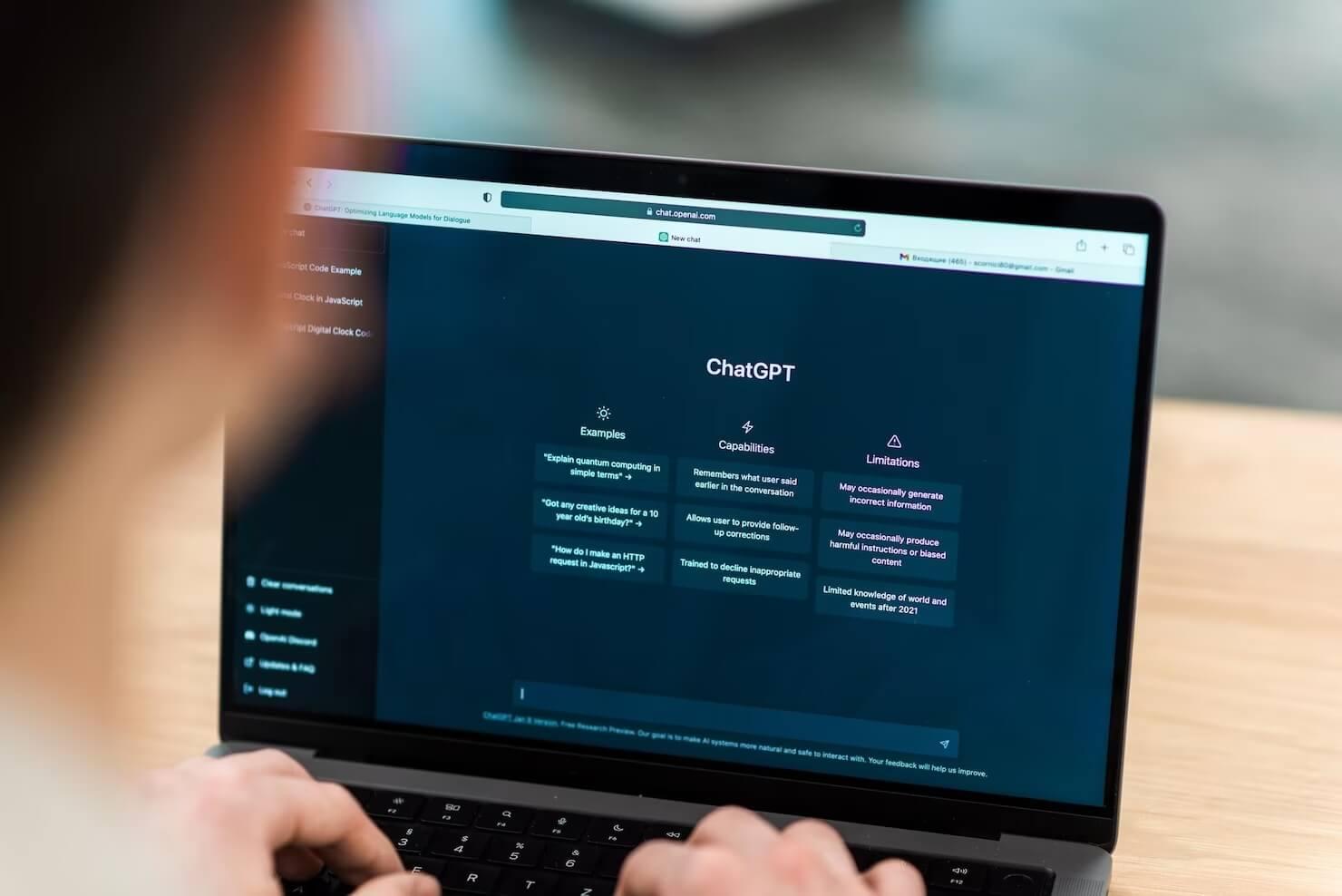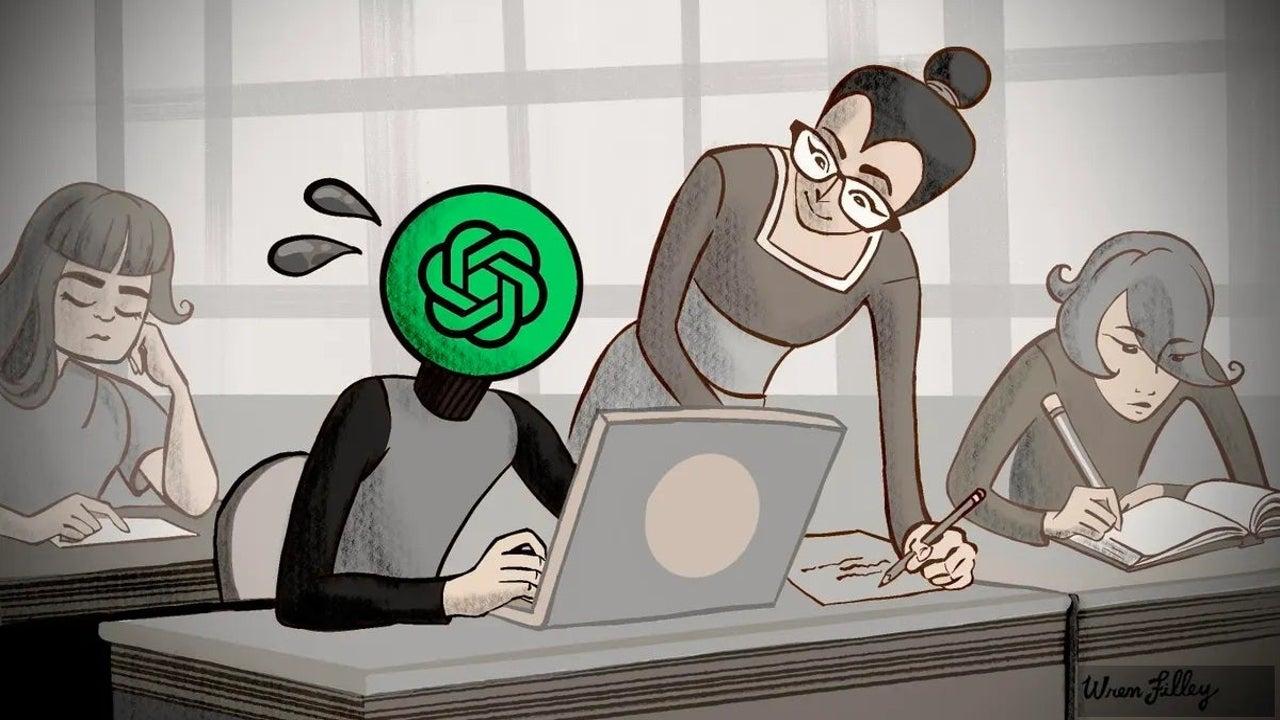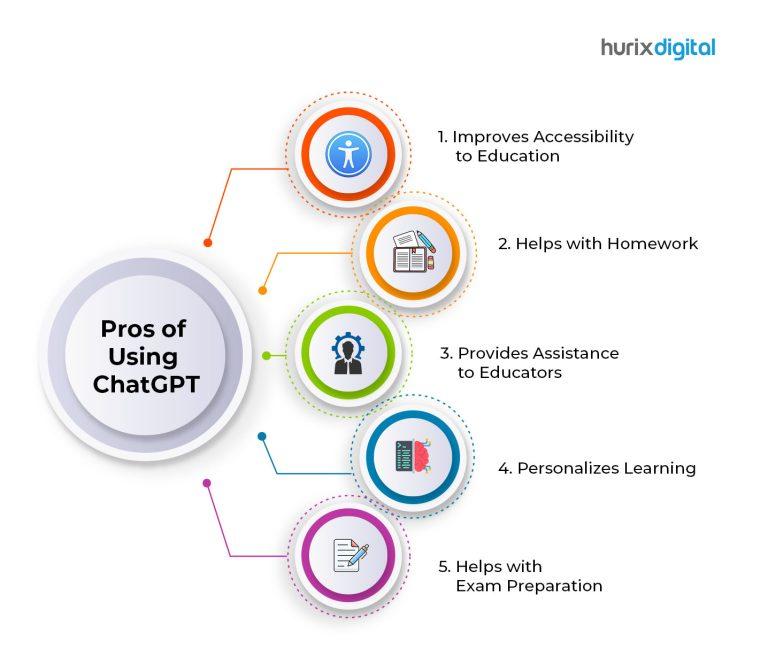In the digital age, where information flows faster than ever, students are turning to new tools to navigate the challenges of academic life. Among these innovations, ChatGPT has emerged as a powerful assistant, capable of generating essays, solving problems, and sparking ideas with just a few keystrokes. Yet, this convenience comes with a catch: educators and institutions are increasingly catching on to the subtle footprints left by AI-generated work. As the lines blur between human effort and machine assistance, a complex debate unfolds about integrity, creativity, and the future of learning. This article explores how students are using ChatGPT to tackle assignments-and why many are finding that getting caught is just a matter of time.
Table of Contents
- The Rise of ChatGPT in Academic Workplaces
- Unveiling the Telltale Signs of AI-Generated Assignments
- Balancing Innovation and Integrity in Student Submissions
- Strategies Educators Use to Detect AI-Assisted Work
- Guidelines for Ethical Use of AI Tools in Learning
- Frequently Asked Questions
- Insights and Conclusions
The Rise of ChatGPT in Academic Workplaces
In recent years, AI-powered tools like ChatGPT have swiftly embedded themselves into academic environments, reshaping how students approach their assignments. Its ability to generate coherent essays, solve complex problems, and even simulate human-like conversations has made it a tempting shortcut for many. However, this convenience comes at a price, as educators are becoming increasingly adept at detecting AI-generated work.
Students leverage ChatGPT in several distinct ways:
- Drafting essays or reports to save time on research and writing.
- Generating ideas or outlines to overcome writer’s block.
- Creating code snippets or solving math problems quickly.
- Translating or rephrasing content to improve language quality.
Despite its versatility, the overreliance on ChatGPT can leave digital footprints. Many institutions have adopted AI-detection software, plagiarism checkers tuned to flag AI patterns, and even oral examinations to ensure authenticity. The consequences for getting caught range from failing the assignment to more severe academic penalties.
| Detection Method | How It Works | Effectiveness |
|---|---|---|
| AI Content Detectors | Analyze linguistic patterns and predict AI origin | High |
| Plagiarism Checkers | Compare text against vast databases | Moderate |
| Oral Exams | Test student’s knowledge in real-time | Very High |
| Metadata Analysis | Inspect file data for creation clues | Growing |
As AI tools like ChatGPT continue evolving, academic institutions face a dual challenge: embracing technological advancements while preserving academic integrity. This delicate balance will likely shape the future dynamics between students and educational frameworks.

Unveiling the Telltale Signs of AI-Generated Assignments
Detecting AI-generated assignments requires a keen eye for subtle inconsistencies that often slip through automated text generators like ChatGPT. One of the most common giveaways is a lack of personal voice. While the content may be grammatically flawless and well-structured, it frequently lacks the unique quirks and nuanced opinions that characterize genuine student work. Educators have noticed that these submissions often feel too polished or overly formal compared to a student’s usual style.
Another red flag is the presence of generic or overly broad statements that avoid deep analysis or specific examples. AI tends to generate text that sounds informative but can sometimes be vague, failing to engage critically with the assignment prompt. Additionally, there may be subtle factual inaccuracies or outdated references, as AI models rely on training data that can become obsolete.
- Unnatural transitions between paragraphs
- Repetitive phrasing or unusual word choices
- Discrepancies between submitted work and in-class performance
- Inconsistent citation styles or fabricated sources
| Indicator | Why It Raises Suspicion |
|---|---|
| Sudden spike in writing quality | Mismatch with prior assignments |
| Overly formal tone | Uncharacteristic for student’s age or background |
| Inconsistent referencing | Possible AI-generated fabricated citations |
| Unexplained changes in vocabulary | AI’s word choice differs from student’s usual style |
Balancing Innovation and Integrity in Student Submissions
In the evolving landscape of education, the integration of AI tools like ChatGPT presents a fascinating dilemma. On one hand, these technologies offer students innovative ways to explore ideas, draft essays, and clarify complex concepts. However, when the line between assistance and academic dishonesty blurs, educators find themselves navigating a challenging path to uphold the values of originality and integrity.
Striking a balance requires more than just surveillance; it demands a cultural shift in how assignments are designed and assessed. Educators are increasingly adopting strategies that encourage critical thinking and personalized responses, making it harder for AI-generated content to go unnoticed. This approach not only discourages misuse but also empowers students to engage deeply with their subject matter.
Consider the following tactics that have shown promise in maintaining academic honesty while embracing innovation:
- In-class reflections: Prompt students to discuss how they approached their assignments, revealing their thought process.
- Process portfolios: Require drafts and brainstorming notes, which highlight the evolution of their work.
- Oral presentations: Give students the opportunity to explain their submissions in person, verifying authorship.
| Strategy | Benefit | Challenge |
|---|---|---|
| In-class reflections | Encourages honesty and deep engagement | Time-consuming to implement consistently |
| Process portfolios | Shows authentic progression of ideas | Requires ongoing student discipline |
| Oral presentations | Validates student knowledge directly | May induce anxiety for some students |
Ultimately, fostering an environment that values integrity alongside innovation will prepare students not just for academic success, but for ethical decision-making in their future careers. By adapting assessment methods and promoting transparency, schools can leverage AI as a tool for growth rather than a loophole for shortcuts.

Strategies Educators Use to Detect AI-Assisted Work
Educators are sharpening their detection skills, blending traditional evaluation methods with modern technology to uncover AI-assisted submissions. One common approach involves analyzing writing style consistency throughout a student’s portfolio. Sudden shifts in vocabulary complexity, tone, or sentence structure often raise red flags. Teachers compare current assignments with previous work to spot discrepancies that might indicate external assistance.
In-class follow-ups have also become a popular strategy. After reviewing a suspicious paper, instructors might invite students to discuss their work orally or write a similar piece under timed, supervised conditions. This direct engagement helps educators gauge the student’s authentic understanding and writing ability, making it harder for AI-generated content to go unnoticed.
Technological tools play a crucial role as well. Many schools are experimenting with AI-detection software, which scans texts for telltale markers of machine-generated writing, such as unnatural phrasing or repetitive patterns. While these tools are not foolproof, they provide an additional layer of scrutiny, especially when combined with human judgment.
- Comparative style analysis
- Oral and timed writing assessments
- AI-detection software usage
- Peer reviews and group discussions
| Detection Method | Key Indicator | Effectiveness |
|---|---|---|
| Style Consistency Check | Sudden tone or vocabulary shifts | High |
| In-Class Writing | Real-time demonstration of skills | Very High |
| AI Detection Tools | Unnatural language patterns | Moderate |
| Peer Review | Collaborative insight | Variable |

Guidelines for Ethical Use of AI Tools in Learning
With AI tools becoming increasingly accessible, it’s essential for students to embrace a mindset of responsibility and integrity. Using AI as a supplement-to brainstorm ideas or clarify difficult concepts-can enhance learning without compromising originality. However, crossing the line into submitting AI-generated work as one’s own undermines academic values and can lead to serious consequences.
Transparency is key. Students should openly acknowledge the use of AI tools in their assignments, clearly distinguishing between their original input and AI-generated content. This practice fosters trust between learners and educators and encourages a culture of honesty.
To maintain ethical standards, consider the following practices:
- Use AI to assist with research, not to write entire essays.
- Review and critically assess AI-generated suggestions before incorporating them.
- Cite AI tools when they contribute significantly to your work.
- Understand your institution’s policies on AI usage and comply accordingly.
| Ethical Practice | Student Action | Benefit |
|---|---|---|
| Transparent Use | Disclose AI assistance in footnotes or acknowledgments | Builds credibility and academic integrity |
| Critical Evaluation | Verify AI-generated content for accuracy | Ensures quality and learning retention |
| Original Contribution | Add personal insights and analysis | Demonstrates understanding and creativity |
Frequently Asked Questions
Q: What is ChatGPT, and why are students using it for assignments?
A: ChatGPT is an advanced AI language model that can generate text based on prompts. Students are using it to draft essays, solve problems, and brainstorm ideas because it offers quick, coherent, and often impressive responses that can make completing assignments easier and faster.
Q: How exactly are students incorporating ChatGPT into their schoolwork?
A: Some students use ChatGPT to write entire essays, create summaries, or even generate answers for complex questions. Others might use it as a brainstorming tool or to refine their writing, but the line between assistance and academic dishonesty can sometimes blur.
Q: Why are educators concerned about ChatGPT’s role in assignments?
A: Educators worry that reliance on AI-generated content undermines learning objectives, critical thinking, and originality. It can also lead to plagiarism issues and diminish students’ ability to develop essential skills through their own effort.
Q: How are schools detecting when students have used ChatGPT to complete assignments?
A: Teachers and institutions use a combination of AI-detection software, inconsistencies in writing style, unexpected sophistication in student work, and direct questioning to uncover AI-generated content. Some schools have also updated honor codes to address this new challenge.
Q: What happens when a student is caught using ChatGPT improperly?
A: Consequences vary by institution but can include failing the assignment, academic probation, or even suspension. Many schools emphasize education about ethical use of AI tools rather than immediate punishment, aiming to guide students toward responsible technology use.
Q: Is using ChatGPT always considered cheating?
A: Not necessarily. When used as a tool for learning-such as generating ideas, improving drafts, or studying concepts-ChatGPT can be beneficial. Problems arise when students submit AI-generated work as their own without proper attribution or effort.
Q: How can students use ChatGPT ethically in their academic work?
A: Students should use ChatGPT as a supplement rather than a substitute for their own thinking. Citing AI assistance when appropriate, verifying information, and critically engaging with generated content can help maintain academic integrity.
Q: What does the future look like for AI tools like ChatGPT in education?
A: AI is likely to become a standard part of the educational landscape. Schools and educators are adapting by developing new guidelines, teaching digital literacy, and exploring ways to integrate AI constructively, balancing innovation with fairness and learning goals.
Insights and Conclusions
As the lines between human thought and artificial assistance continue to blur, the story of students turning to ChatGPT for assignments is a cautionary tale wrapped in innovation. While technology offers unprecedented tools for learning, it also challenges the boundaries of academic integrity. Ultimately, this evolving dance between curiosity and consequence invites educators, students, and developers alike to rethink how knowledge is created, shared, and safeguarded in the digital age. Whether ChatGPT becomes a companion or a crutch depends on the choices we make-and the lessons we learn along the way.

